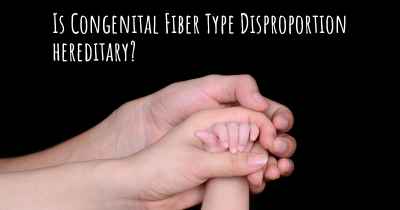How is Congenital Fiber Type Disproportion diagnosed?
See how Congenital Fiber Type Disproportion is diagnosed. Which specialists are essential to meet, what tests are needed and other useful information for the diagnosis of Congenital Fiber Type Disproportion

Congenital Fiber Type Disproportion (CFTD) is a rare genetic muscle disorder that affects the structure and function of muscle fibers. It is typically diagnosed through a combination of clinical evaluation, muscle biopsy, and genetic testing.
Clinical Evaluation
The first step in diagnosing CFTD involves a thorough clinical evaluation by a healthcare professional. This may include a detailed medical history, physical examination, and assessment of symptoms. The healthcare provider will look for signs of muscle weakness, delayed motor milestones, and other characteristic features of CFTD.
Muscle Biopsy
A muscle biopsy is a key diagnostic procedure for CFTD. During a muscle biopsy, a small sample of muscle tissue is removed for analysis. The procedure is typically performed under local anesthesia. The sample is then examined under a microscope to assess the structure and composition of muscle fibers.
In CFTD, the muscle biopsy reveals a characteristic pattern of fiber size disproportion. This means that there is a significant size difference between the various muscle fibers, with some being smaller or larger than normal. The type 1 fibers, which are typically slow-twitch and responsible for endurance, are usually smaller compared to type 2 fibers, which are fast-twitch and responsible for strength and power.
Genetic Testing
Genetic testing plays a crucial role in confirming the diagnosis of CFTD and identifying the specific genetic mutations involved. There are several genes associated with CFTD, including ACTA1, TPM3, TPM2, MYH7, and others. Genetic testing can be performed using various techniques, such as targeted gene sequencing or next-generation sequencing.
Identification of specific genetic mutations helps in confirming the diagnosis of CFTD and can also provide important information regarding disease prognosis and inheritance patterns. Genetic testing may also be recommended for family members of an affected individual to determine if they carry the same genetic mutation.
Additional Tests
In some cases, additional tests may be performed to rule out other muscle disorders or to assess the extent of muscle involvement. These tests may include electromyography (EMG) to evaluate muscle electrical activity, nerve conduction studies to assess nerve function, and imaging studies such as MRI or CT scans to visualize muscle structure.
Conclusion
Congenital Fiber Type Disproportion is diagnosed through a combination of clinical evaluation, muscle biopsy, and genetic testing. The characteristic pattern of fiber size disproportion observed in the muscle biopsy, along with the identification of specific genetic mutations, helps in confirming the diagnosis. It is important to consult with a healthcare professional experienced in neuromuscular disorders for an accurate diagnosis and appropriate management of CFTD.








